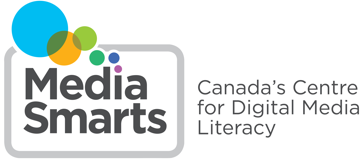Stay on the Path Lesson Four: Scavenger Hunt
In this lesson, students apply their searching and critical thinking skills to learn how to find legitimate online sources for downloading and streaming movies, music and videos.

In this lesson, students apply their searching and critical thinking skills to learn how to find legitimate online sources for downloading and streaming movies, music and videos.

In this lesson students learn how to create well-defined search strings and to use tools and techniques such as bookmarking, browser filters and search engine preferences to avoid unwanted material.

In this lesson students learn how to authenticate online information by comparing “facts” from the website www.allaboutexplorers.com with more authoritative sources.

This collection of articles on media education around the world will fulfill an important need: informing us of the struggle to critically understand the global implications of media education.

With all the recent attention focused on stories of teenagers charged with distributing child pornography for taking sexually suggestive pictures of themselves, jobs lost due to Facebook and MySpace entries, and libel suits over blog posts, people are justifiably concerned about the permanence of material posted to the Internet. Many a teacher or parent has had to carefully explain to children or teens that whatever they post online might be seen by people other than the intended audience, and might be out there for a very long time.

The classic 1985 science fiction novel Ender's Game is one of several books of that period that foresaw both the advent of the Internet and its eventual importance in society. While certain aspects of its portrayal seem dated – in particular, it more resembles the text-based bulletin board systems of the time than today's graphic Web – one element stands out as being particularly prescient: the use of the Internet to allow youth to participate fully in society. While today's young people aren't using the Internet to take over the world, as the characters in the novel do, they are increasingly using it to change the world, and more and more teachers are using the Internet to bring civic engagement into the classroom.

Two new media education resources crossed our desk recently: Totally Wired by Anastasia Goodstein and Children's Learning in a Digital World, edited by Teena Willoughby and Eileen Wood. While they are extremely different, both are useful additions to any media education library.

I was recently asked by Jane Tallim to write a guest blog and seriously wondered what suggestions I could offer that would appeal to high school English and Media Studies teachers. We all know that teaching media is like trying to hit a moving target, and education lags behind revolutionary changes in new media forms. However, over the past decade of teaching both Media Studies and high school English, I have spent much time considering the intersection of new media forms with traditional English forms and have tried to build a bridge of understanding across time for my students regardless of the target. By focusing on the skills of deconstruction and construction, I believe the form of the text, or the new medium, becomes less relevant to comprehension.

It's been widely said that attention is the currency of the 21st Century. In an age where media occupy an increasingly central role in our lives, the need to have that media focused on you becomes intense. For no-one is this more true than for children and teens, who now expect to be connected twenty-four hours a day and for whom the Internet and cell phones are essential parts of their social lives. An interesting Facebook page, amusing Tweets, outrageous YouTube videos, even shocking photos sent by cell phone -- most of us are aware of the ways that young people seek their peers' attention. In today's media environment, is it still possible to teach young people the value of privacy? What, indeed, does the idea of privacy even mean to today's children and teens?

Larry Gonick is a pioneer of non-fiction cartooning; starting with Blood From A Stone: A Cartoon Guide to Tax Reform in 1971, he has made a career out of explaining complicated topics in comic format. In 1978 he published the first issue of The Cartoon History of the Universe as a comic book, starting with the Big Bang and ending with the evolution of humanity. Issues of that series were collected first in 1982 and again in 1990; later two sequels appeared, The Cartoon History of the Universe II and III, and in 2007 the series continued as The Cartoon History of the Modern World. With the second volume of that series, published this fall, Gonick brings his history up to late 2008. Throughout the series Gonick has consistently made history entertaining and approachable as well as accurate (each volume ends with an annotated bibliography) and has shed light on the history of often-neglected parts of the world such as China, India and pre-Columbian America. Among his other works are The Cartoon History of the United States and the Cartoon Guide series, which provide grounding in topics ranging from physics to communication theory to sex; his works have been among the most influential in bringing comics into the classroom.
